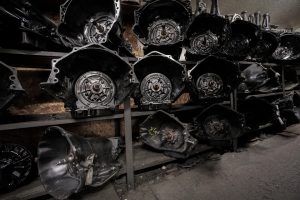Vehicles are in a constant state of degradation, and owning one means you will have to dedicate your time and money to maintain it. Here are five tips for replacing or repairing your Toyota parts:
1. Know When Repair Is Needed 
Every Toyota owner should learn of the common early signs of car trouble. You can detect most problems using your senses; listening to strange noises, eyeballing the area around your vehicle, noticing unusual odors, or even sensing a difference in the way your car handles:
Smells Like Trouble
Thick, pungent odor indicates burning oil. Look for signs of a leak. A burning resin odor may signal overheated clutch or brakes. Do not delay diagnosis.
Feels Like Trouble
Difficult steering, handling, lower fuel economy, difficulty starting the engine, a rough ride, vibration, and poor performance are symptoms of technical failure
2. Choose the Right Technician
It can be challenging to find a reliable, honest repair facility that does excellent work. You put yourself in a better position by knowing the techniques of finding a qualified local repair shop. They include:
- Look for certified facilities – the certifications indicate that the mechanics meet particular competence and knowledge standards in specific technical areas
- Knowledge of vehicle make – if you do not use a Toyota dealership for service, ask if the technicians have experience working on the same make or car model as yours
3. Observe the Warranty
If your Toyota is under warranty, the last thing you would want is to void your coverage when replacing parts. Use the manufacturer’s parts or quality aftermarket parts equivalent to Toyota’s. Also, keep all the receipts on repairs and replacements done at facilities other than Toyota dealerships.
4. Use Genuine Recommended Parts
Consider using genuine parts for better performance and peace-of-mind that comes from 100% certainty. Every car part from the automaker is approved by an engineering team that designed your car. Toyota develops these parts with strict standards of quality and reliability, specifically for your vehicle. There are several other options in the market, such as:
- Aftermarket parts – while these are parts are not manufactured under the supervision and approval of Toyota, they offer a significant cost advantage
- Remanufactured parts – these are original parts that have been disassembled, inspected, and repaired before the automaker sells them
- Salvage parts – these are used, undamaged parts common in collision repair; some have the inherent Toyota manufactured part’s quality and may also come with a limited warranty
5. Do Some Repairs Yourself
You can do some repairs and replacements such as oil change, replacing wiper blades, fixing paint scratches and tire pressure in your garage. It is cheaper and fun.
Car parts often get worn out, and you will have to service or replace them with new ones. For more tips and information about Toyota service and parts, contact Atlantic Toyota in West Islip, NY.



